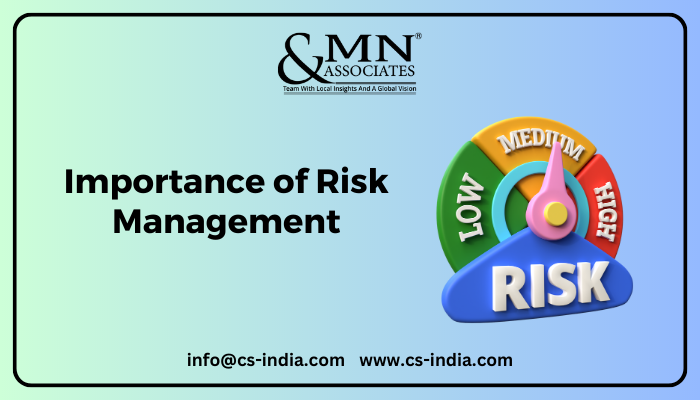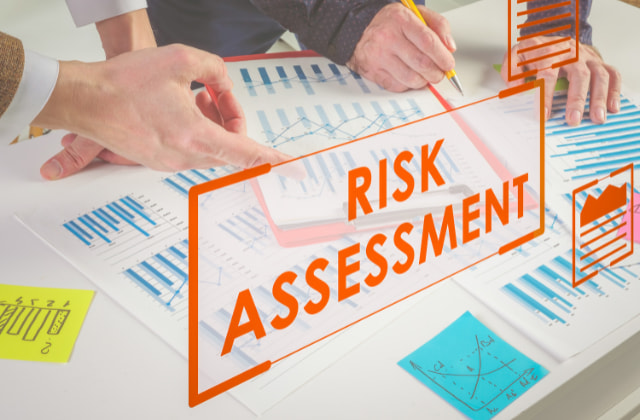The Function and Importance of Risk Management in Ensuring Business Continuity
The Function and Importance of Risk Management in Ensuring Business Continuity
Blog Article
Checking out the Relevance of Risk Management for Effective Decision-Making Strategies
In the intricate world of service, Risk Management emerges as an important consider the decision-making procedure. The capability to recognize possible risks and possibilities, and plan appropriately, can spell the difference between success and failing. With tools such as SWOT and PESTEL, companies are geared up to make educated choices, promoting durability and adaptability in an ever-changing environment. Wondering exactly how this works? Allow's unpack the dynamics further.
Comprehending the Idea of Risk Management
Risk Management, an important element in decision-making, is typically misconstrued or oversimplified. Typically, it refers to the identification, assessment, and prioritization of dangers to lessen, keep an eye on, and control the chance or effect of regrettable events. Nevertheless, it's not simply about preventing adverse results, but also about recognizing potential chances. Risk Management involves regimented and structured techniques, using information and insightful analyses. It calls for an extensive understanding of the company's context, goals, and the potential dangers that could combat them. From economic unpredictabilities, legal responsibilities, calculated Management errors, to mishaps and all-natural catastrophes, it deals with various dangers. Significantly, reliable Risk Management is not stationary; it's a continuous, forward-looking process that develops with altering circumstances.
The Duty of Risk Management in Decision-Making Processes
In the realm of calculated planning and company operations, Risk Management plays an indispensable duty in decision-making processes. It helps in recognizing potential threats and uncertainties that might influence the achievement of organization goals. By mapping these dangers, firms can create methods to minimize their impact, making certain company connection and security. Risk Management thus ends up being a vital tool in decision-making, helping leaders to make informed options based upon a comprehensive understanding of the threats included. It urges a positive strategy, allowing companies to anticipate and prepare for possible future situations. This considerably lowers the chance of unfavorable repercussions, promoting a lot more effective and efficient decision-making techniques. For that reason, Risk Management functions as an essential component in the decision-making processes of any kind of organization.

Exactly How Risk Management Improves Strategic Preparation
In the context of critical planning, Risk Management plays a critical function. Starting with the identification of potential threats, it even more encompasses the implementation of Risk mitigation measures. The role of Risk Management is not fixed yet dynamic, as it demands consistent monitoring and adjusting of techniques.
Identifying Potential Threats

Applying Risk Mitigation
Risk mitigation strategies can vary from Risk evasion, Risk transfer, to risk reduction. Each technique must be customized to the certain Risk, considering its potential effect and the organization's Risk resistance. Efficient Risk mitigation calls for a deep understanding of the Risk landscape and the possible influence of each Risk.
Tracking and Changing Strategies
Though Risk mitigation is an important action in critical preparation, continuous monitoring and adjustment of these methods is just as important. It likewise gives an opportunity to review the success of the Risk Management steps, enabling changes to be made where required, additional enhancing calculated planning. Surveillance and adjusting Risk Management techniques is a vital element for boosting an organization's strength and tactical preparation.
Instance Studies: Successful Risk Management and Decision-Making
On the planet of business and finance, effective Risk Management and decision-making often function as the pillars of prosperous business. One such entity is a multinational oil business that reduced economic loss by hedging against fluctuating oil costs. In one website link more circumstances, a tech startup prospered by determining and accepting risky, high-reward approaches in an unpredictable market. A worldwide bank, encountered with regulative uncertainties, successfully browsed the circumstance through aggressive Risk evaluation and dynamic decision-making. These instances highlight the value of astute Risk Management in decision-making procedures. It is not the absence of Risk, however the Management of it, that commonly differentiates effective business from not successful ones. These situations highlight the vital function of Risk Management in tactical decision-making. importance of risk management.
Devices and Strategies for Reliable Risk Management
Navigating the elaborate labyrinth of Risk Management calls for the appropriate collection of tools and techniques. These devices, such as Risk signs up and warmth maps, help in determining and assessing possible threats. Methods include both quantitative approaches, like level of sensitivity evaluation, and qualitative techniques, such as SWOT analysis. These assistance in focusing on risks based on their possible impact and chance. Risk response strategies, a key element of Risk Management, include accepting, preventing, transferring, or mitigating threats. Monitoring and controlling threats, through regular audits and testimonials, make sure that the methods remain reliable. With these strategies and tools, decision-makers can browse the complicated landscape of Risk Management, thus assisting in notified and reliable decision-making.
Future Fads in Risk Management and Decision-Making Approaches
As we check out the large landscape of Risk Management, it becomes noticeable that the strategies and devices used today will certainly continue to evolve. The idea of Risk culture, where every member of a company is conscious and find out included in Risk Management, will obtain much more prominence. These trends proclaim a more aggressive and inclusive method towards Risk Management and decision-making.
Conclusion

Risk Management therefore becomes a vital device in decision-making, assisting leaders to make educated choices based on a thorough understanding of the threats included. Risk Our site reduction techniques can vary from Risk avoidance, Risk transfer, to run the risk of reduction (importance of risk management). Effective Risk mitigation calls for a deep understanding of the Risk landscape and the potential impact of each Risk. Risk feedback approaches, a vital element of Risk Management, include accepting, avoiding, moving, or mitigating dangers. The idea of Risk culture, where every participant of an organization is conscious and included in Risk Management, will get more prestige
Report this page